A quick tip to improve your strength and posture is the horizontal pull. Horizontal pull exercises is targeting the muscles of the upper and mid-back which directly influencing your posture and shoulder health by engaging the posterior chain. These exercises help in developing a broad, strong back while preventing common shoulder injuries.
We will guide you through the top horizontal pull exercises that serve as the cornerstone for a resilient and aesthetically pleasing upper body, along with insights on integrating them into your routine for optimized strength training.
Key Takeaways
- Horizontal pull exercises are fundamental for developing back strength, promoting good posture, and preventing shoulder injuries.
- Exercises like the seated cable row, bent-over row, and single-arm dumbbell row are effective to improving muscle symmetry and control.
- It can also address weaker muscle groups, enhancing overall back strength, and achieving specific fitness goals.
- Example of equipment needed are kettlebells, resistance bands, and TRX suspension trainers.
The Power of Horizontal Pulls
Explore the essence of horizontal pull exercises, the backbone of enviable back development and the basis for excellent posture. As you move your body horizontally or diagonally to the ground, these movements powerfully engage the posterior chain. Imagine the satisfaction as your latissimus dorsi and rhomboids, the architects of shoulder stability, awaken with every pull.
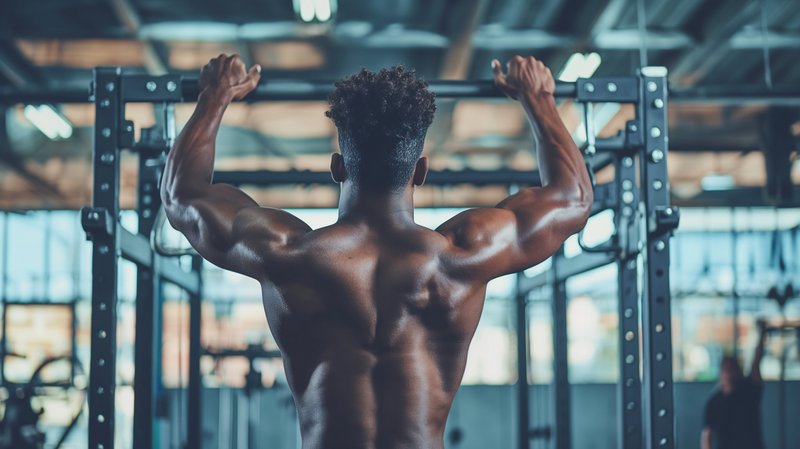
But the benefits extend beyond mere aesthetics. Horizontal pull exercises act as safeguards, mitigating common shoulder injuries that can plague resistance training enthusiasts. They’re not just about building strength; they’re about crafting a resilient framework for your body, often alleviating the nagging low back pain that haunts many adults.
Embrace horizontal pulls and vertical pulls, and you’ll unlock a world where strength meets grace.
The Mechanics of Horizontal Pulls
Understanding the mechanics of horizontal pulls is vital before you start this journey. Perfecting exercises like the Cable Row, Bent Over Rows, and Inverted Rows with finesse and form is essential for safety and the effectiveness of each movement. The harmony of stability and muscle engagement that comes with proper form paves the way for maximized workouts and sculpted strength that supports impeccable posture.
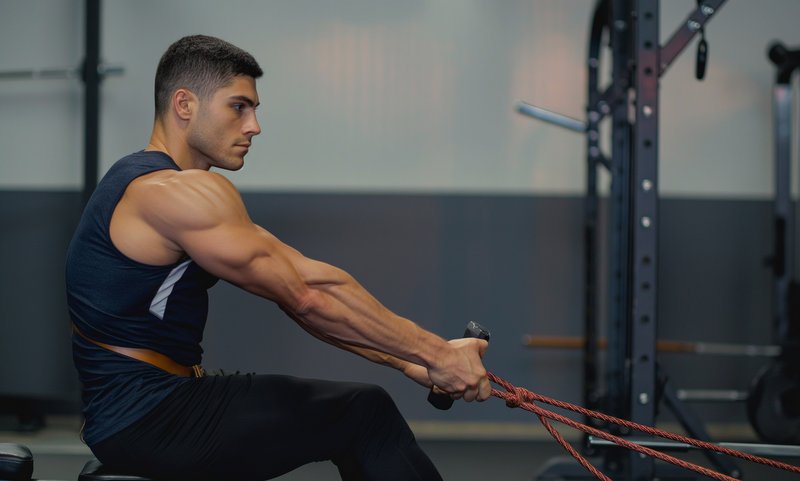
The array of essential horizontal pulling movements at your disposal, from single arm rows to barbell rows, offers a diverse toolkit to target your back muscles. With each pull, you’re inviting a symphony of muscle activation that translates into a broader, more powerful back. Now, let’s delve deeper into the mechanics of specific exercises that will become the pillars of your horizontal pull proficiency.
The Seated Cable Row
The seated cable row serves as your introduction to mastering horizontal pull exercises. Ideal for beginners, it establishes a strong mind-muscle connection that’s crucial for all subsequent pulling movements. As you sit at the cable machine, envision your posture as the unwavering pillar that supports the entire exercise. A symphony of movement unfolds as you pull the cable towards you, the core and back muscles engaging in unison for a flawless execution.
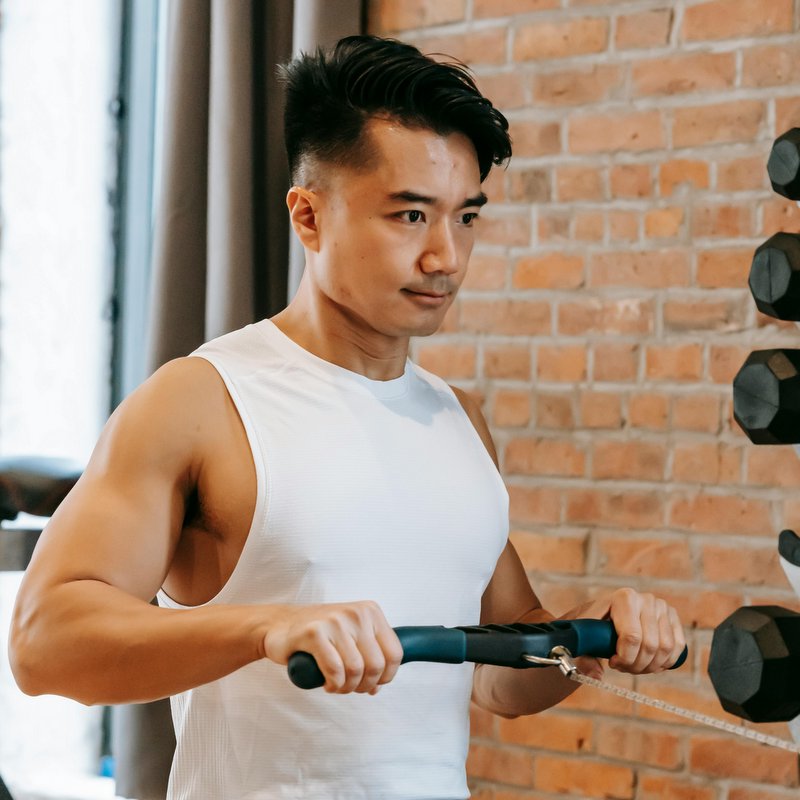
Imagine your elbows driving down and back, the lats, rhomboids, and traps igniting with each row, as you sculpt an upper back that’s both powerful and poised. This isn’t just a pull; it’s a journey towards an upper back that carries you through life with ease.
Bent Over Row
The bent-over row represents an art form, a dance of strength that precisely engages the lats and rhomboids. Begin with a respectful bow to the barbell, your knees slightly bent and your hips hinged, spine neutral as if balanced by an invisible thread from the crown of your head to your tailbone. As you lift, the barbell travels towards your lower abdomen, a path that ensures you’re targeting the muscles that crave this work, not just the ones that are easiest to engage.
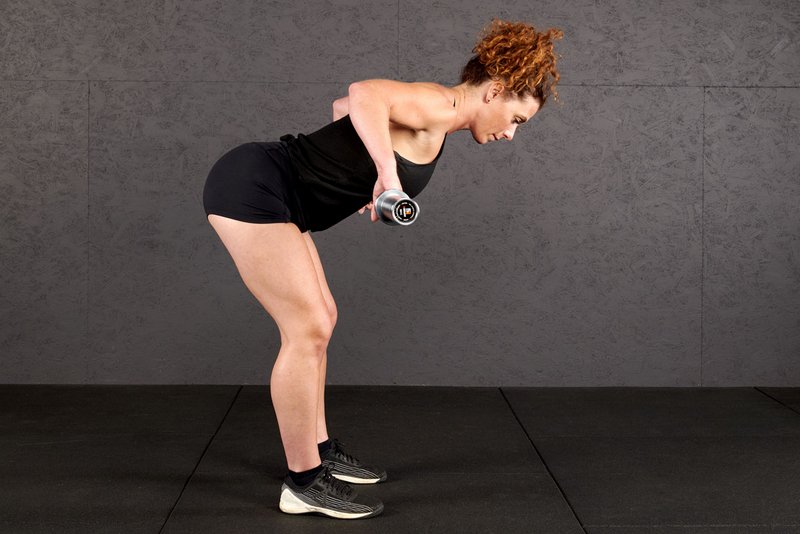
With each row, your elbows trace an arc that carves out the back of your dreams. You pull, pause at the peak, and then slowly lower the weight, resisting the temptation to let gravity do the work. This control, this focus, is where your true strength lies.
The Single Arm Dumbbell Row
The single-arm dumbbell row calls to those seeking a balance and unilateral strength challenge. It’s a tale of two halves, each side of your body working independently to forge an equilibrium of muscle and might. With one hand on the bench and a dumbbell in the other, you draw the weight upward, your back muscles flexing in a display of controlled power, elbow surpassing the plane of your back.
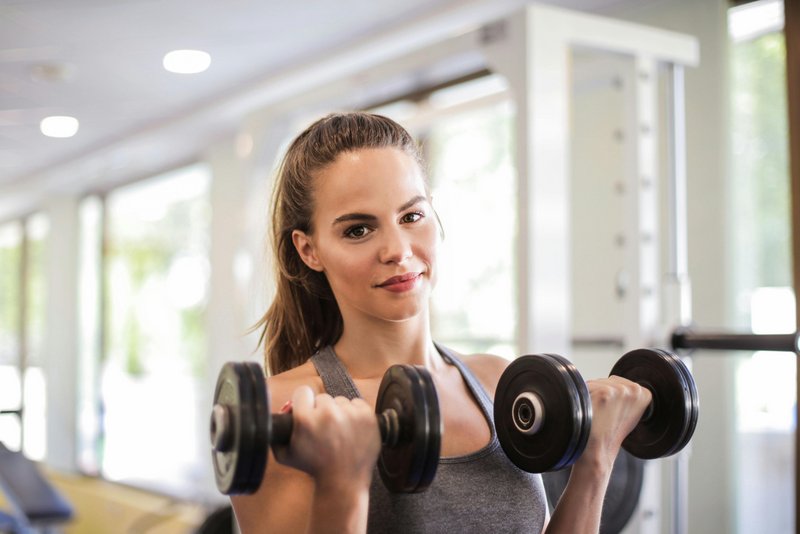
As you mirror the movement with the other arm, you’re not just building muscle, but symmetry, a body that moves with grace and equality. The single-arm row, much like its cousin the single arm cable rows, offers a range of motion that ensures each fiber is engaged, each muscle chiseled to perfection.
Elevating Your Training with Advanced Horizontal Pull Variations
With the basics ingrained, you can progress your training with advanced horizontal pull variations and even explore vertical pull exercises. These are the challenges that seasoned trainees yearn for, the exercises that push the boundaries of strength and skill. Ring rows, for instance, are a canvas for creativity, allowing you to adjust the body’s angle to the ground, making each pull a unique test of your fortitude.
As you explore variations like the front lever and pelican curl, your back and biceps will encounter new levels of demand, your workouts infused with an invigorating complexity. These advanced movements are not just exercises; they are milestones on the path to peak physical prowess.
The Pendlay Row
The Pendlay Row offers a burst of explosive energy, requiring power and precision in each horizontal pull. Each rep begins with the barbell on the ground, a promise of pure strength as you prepare to lift. Your back is a flat horizon, your torso as parallel to the floor as the discipline in your heart.
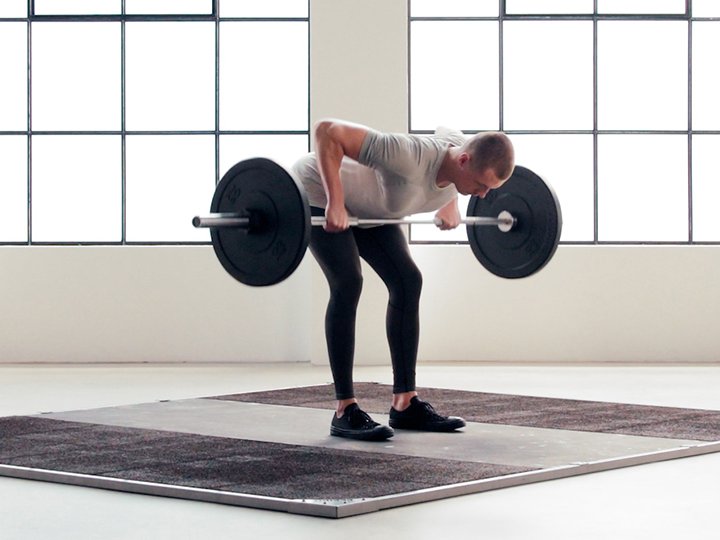
Gripping the barbell with a determination that rivals the steel in your hands, you pull explosively, the bar meeting the base of your chest before returning to the earth. This is not just a row; it’s a declaration of your commitment to back strength and muscular mastery.
The Ring Row Challenge
The ring row challenge invites those eager to conquer their bodyweight. Rings hang like a question, asking if you’re ready to rise to the occasion. Adjusting the body’s angle, you either welcome a reprieve or embrace a steeper challenge, the rings a testament to your evolving strength.
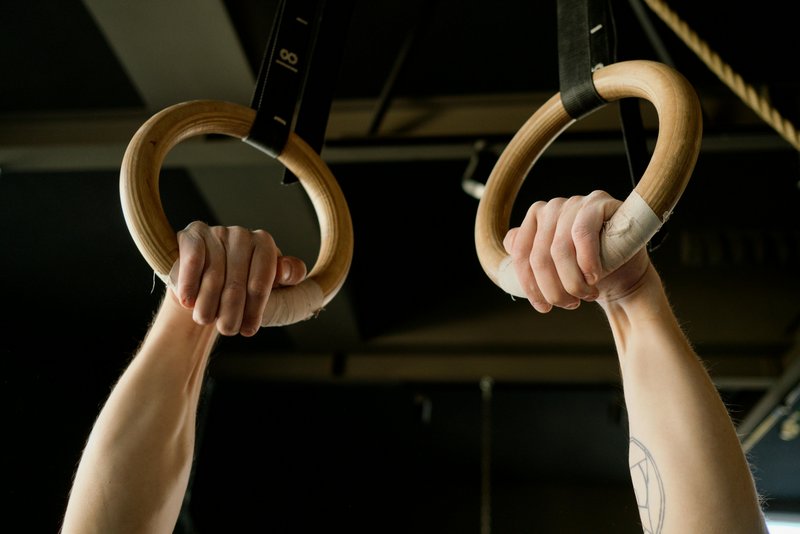
From fully extended arms to a body under tension, you pull, your upper back carving out the strength you’ve dreamed of. And if the call grows louder, elevate your feet, add a weight vest, and watch as the challenge morphs into triumph. The ring row is not just an exercise; it’s a journey of discovery, a test of what you’re truly capable of.
The Chest Supported Dumbbell Row
In the world of isolated exercises, the chest-supported dumbbell row holds a unique place. As you lean into the incline bench, your chest finds support and your back finds freedom. With each pull, the dumbbells arc backward, a movement that promises an upper back not just built, but sculpted with intention. Incorporating chest supported dumbbell rows into your workout routine can help you achieve these results.
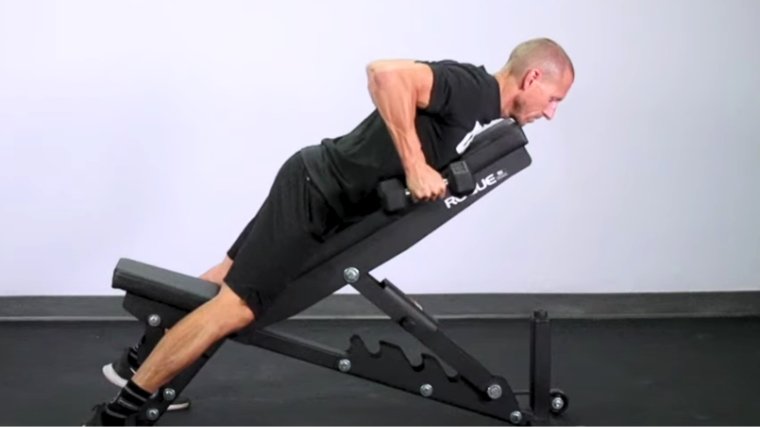
This angle, unique to the chest-supported position, zeroes in on the muscles you’ve gathered here to forge, the upper back that will stand tall in any crowd. Here, you’re not just pulling weight; you’re crafting an upper body that’s a paragon of both power and posture.
Bodyweight Alternatives for Horizontal Pulls
But what happens if the gym is out of reach, or equipment is scarce? Fear not, for the world of horizontal pulls is as accessible as it is vast. Inverted rows stand ready as your entry point, a bodyweight exercise scalable to your journey, whether you’re a novice or a hardened warrior.
With TRX straps, gymnastics rings, or even a sturdy table, you can row against gravity, your own body serving as the resistance that forges your back and shoulders. And should the need for improvisation arise, household items like paint cans and chairs become your allies in the quest for horizontal pull mastery.
The Inverted Row
The inverted row serves as a versatile option in the bodyweight exercise realm. Whether you choose rings, TRX, or a table sturdy enough to hold your ambitions, the inverted row is there, ready to be mastered. Pull your weight upward, your body a straight line from head to heels, a testament to the control and strength within.
And as you engage your rear deltoids, those oft-neglected guardians of shoulder stability, you’re not just exercising; you’re laying the foundation for a back that’s both mighty and balanced, including the strength of your shoulder blades. This is the inverted row, a simple yet profound ally in your quest for physical excellence.
TRX Rows Unveiled
Now, let’s explore the TRX row, an exercise combining tension and strength to target a myriad of muscles. With the TRX’s suspension band as your medium, you paint a picture of:
- lats
- rhomboids
- trapezius
- biceps
All working in concert. Adjust the angle, and with it, the narrative of your workout, each pull a stroke of genius that carves out your desired physique.
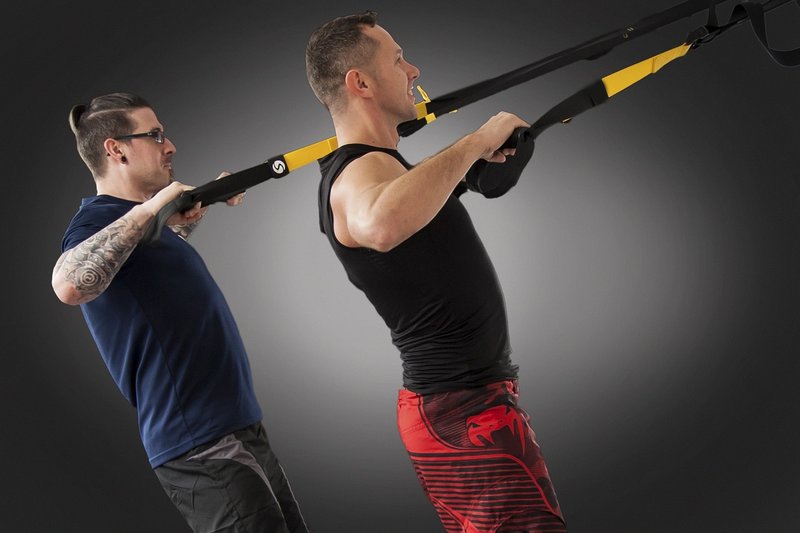
Begin from the starting position and feel the difference in your training. Starting with arms outstretched and ending with your chest proudly meeting your hands, the TRX row is a journey of continuous growth. Here, in this anchored plank position, you’re not just rowing; you’re sculpting a masterpiece with the brush of your own body.
Include Horizontal Pulling Exercises into Your Routine
Executing horizontal pulls expertly is just one aspect of the journey. To truly thrive, one must weave these exercises into the fabric of their workout routine. By integrating horizontal pulls, you address weakened muscles, alleviate pain, and build a fortress of a back that stands undaunted by life’s demands.
Whether you opt for a push-pull-legs split or a full-body approach, horizontal pulls should appear at least twice in your weekly script. They offer flexibility, adaptable to your goals and seamlessly integrating within a broad spectrum of routines. As you add movements like ring rows into your sessions, you’re not just exercising; you’re orchestrating a symphony of strength.
Horizontal Pull Exercise Variations for Specific Goals
But what about specific goals? Fear not, for horizontal pulls are as varied as they are effective. Those seeking hypertrophy will find rows a potent ally, engaging multiple muscle groups in a crescendo of growth. Unilateral variations like the single-arm row shine a spotlight on each side, balancing the scales of muscle development and ensuring no fiber is left behind.
For those who dance with functional strength, compound movements beckon, inviting you to engage multiple muscle groups in a complex and rewarding range of motion. And when the details matter, grip variations like the supinated grip alter the tale slightly, emphasizing different actors in the muscle ensemble. Here, in the realm of horizontal pulls, your goals are the director, and the variations are your cast.
Accessorize Your Pulls: Using Equipment to Enhance Horizontal Exercises
Even after mastering the movements, a range of accessories can further enhance your horizontal pulls. Some accessories that can be used include:
- Kettlebells, which add a layer of intensity and variety that keeps the muscles guessing and growing
- Resistance bands, which provide additional resistance and can be used to target specific muscle groups
- TRX suspension trainers, which allow for a wide range of pulling exercises and can be adjusted to different difficulty levels
- Dumbbells, which can be used for single-arm rows or other variations of horizontal pulls
Incorporating these accessories into your workout routine can help you perform the best horizontal pull exercises for optimal results.
These accessories can help to challenge your muscles and provide a more effective workout.
But let’s not forget the role of cable pulleys, those stalwart providers of continuous tension and resistance that elevate the horizontal cable row and single-arm rows to new heights. Here, in the land of accessories, you’re not just pulling; you’re perfecting every nuance of your back’s potential.
Bands and Pulleys
Bands and pulleys, acting as transformers of tension, can turn horizontal pull exercises into a constant challenge. The cable pulley, in particular, offers a consistent resistance that keeps muscles activated throughout the entire range of motion, a relentless pursuit of strength and stability.
As you leverage cable machines, you add a spectrum of resistance that evolves with your strength, the cable rows and single-arm rows becoming a testament to your progress. Here, in the dance of bands and pulleys, you’re not just working out; you’re sculpting a back that’s as resilient as it is robust.
Grip Variations
Discover the world of grip variations, where a slight change of the wrist can bring new dimensions to your row exercises. Whether you’re gripping the barbell with palms facing up (supinated) or engaging in a neutral grip handshake-like grip, each variation is like choosing a different brush for your masterpiece. A supinated grip not only targets the usual suspects – the mighty back muscles – but also calls upon the biceps and forearms to join the fray, adding a layer of complexity and refinement to your rows.
With the multi-grip barbell row, your hands can explore the bar’s landscape, finding new widths and angles that tell a unique story with every set. From narrow to wide, neutral to angled, you’re not just pulling; you’re exploring the full spectrum of your body’s potential, honing your muscles with the precision of a sculptor.
Horizontal Pulls for Posture and Shoulder Health
Visualize yourself standing taller, with confident shoulders back and chest open, all due to the effective horizontal pull. These exercises are not just about building a visually stunning back; they’re about crafting a frame that supports you through the rigors of daily life. With each row, you’re tending to the health of your shoulders, the rotator cuffs strengthening under the careful tutelage of exercises like:
- face pulls
- bent-over rows, with feet shoulder width apart
- seated cable rows
- inverted rows
These exercises will help you achieve a strong and healthy back.
But the benefits cascade further, correcting muscular imbalances that can lead to chronic pain by fortifying the upper back muscles and coaxing the chest muscles to release their tight grip. As your anterior deltoids and rear delts rise to the challenge, you’re not just exercising; you’re building a fortress of shoulder health that will stand the tests of time and strain.
Wrapup
Horizontal pulls are the threads that put together strength, posture, and health into a resilient and impressive physique. From the foundational seated cable row to the mighty Pendlay, every pull is a step towards a back that commands respect. They offer flexibility, adaptable to your goals and seamlessly integrating within a broad spectrum of routines. It’s a building block for a stronger, more balanced you.
Frequently Asked Questions
What are the primary muscles worked in horizontal pull exercises?
Horizontal pull exercises primarily work the latissimus dorsi, rhomboids, trapezius, posterior deltoids, biceps, and core muscles for stability.
How often should I include horizontal pull exercises in my workout routine?
Including horizontal pull exercises twice per week is recommended for balanced development and posture improvement in your workout routine.
Can horizontal pull exercises help with shoulder pain?
Yes, horizontal pull exercises like face pulls can help alleviate shoulder pain and prevent injuries by strengthening the rotator cuff and promoting healthier shoulder joints.
Are there bodyweight alternatives to traditional horizontal pull exercises that require equipment?
Yes, inverted rows and TRX rows are effective bodyweight alternatives to traditional horizontal pull exercises that require minimal or no equipment. Try incorporating these into your routine for a good workout.
How can I increase the difficulty of exercises like ring rows?
To increase the difficulty of ring rows, you can walk your feet forward to decrease the angle of your body to the ground, elevate your feet to hand level, or add extra weight such as a weight vest to enhance the challenge.

